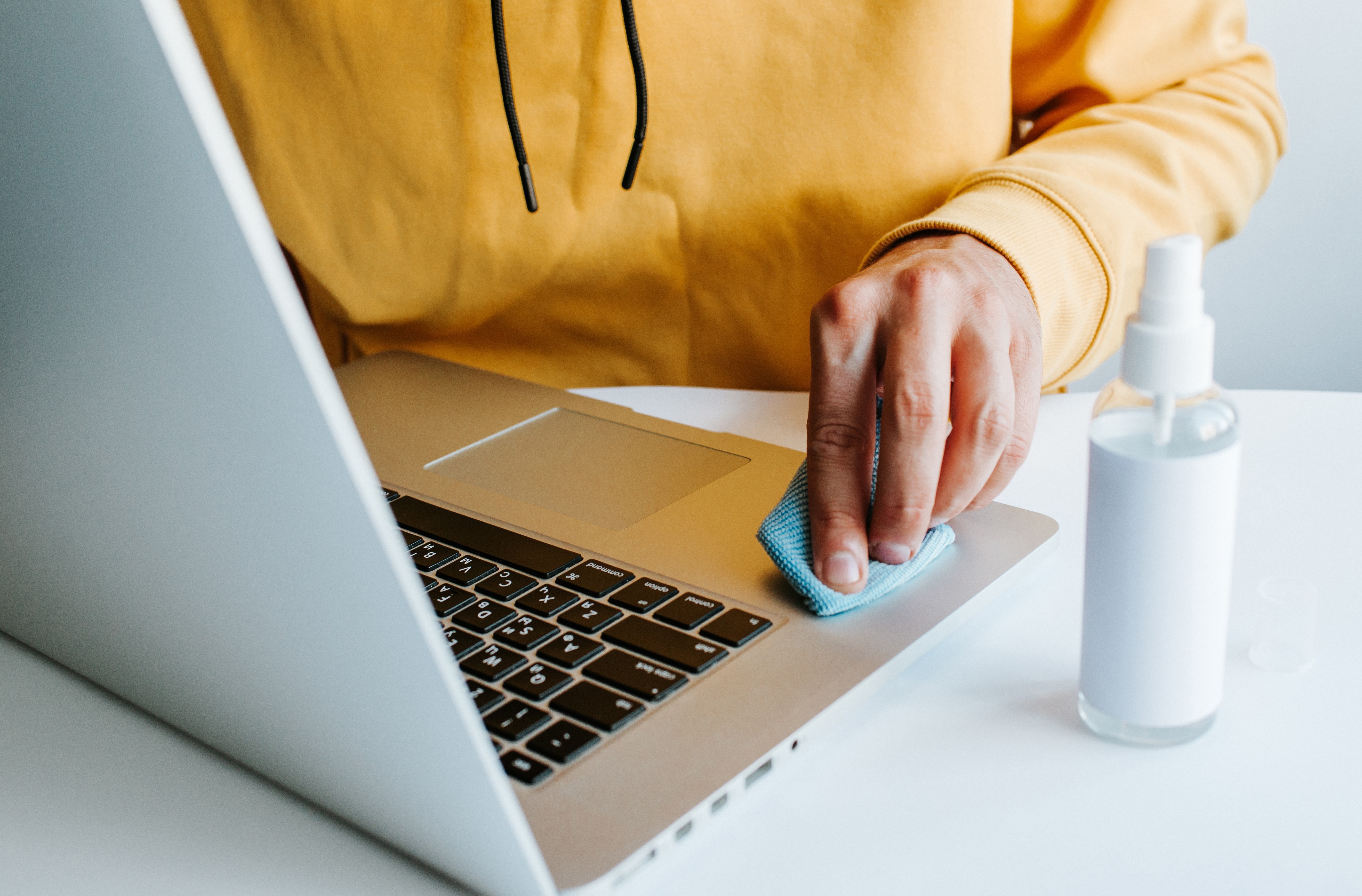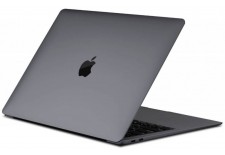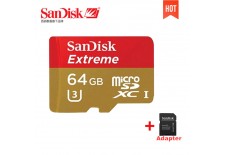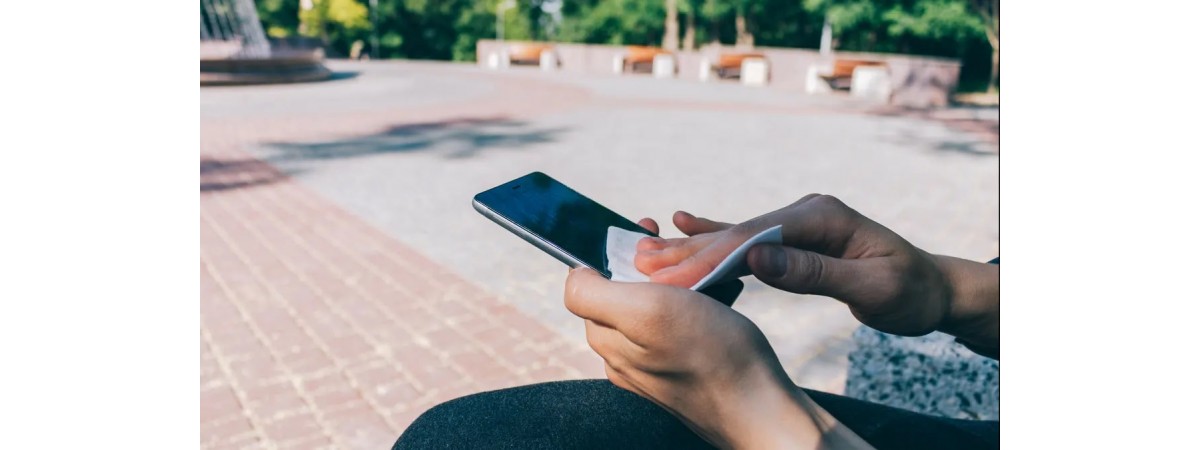How to Sanitize Mobile, Laptop, TV, Watch, Electronics, Etc
Amid growing concerns about the spread of COVID-19, the disease caused by a novel coronavirus, Apple has updated its guidance on how to keep iPhones and other electronic devices clean and free of germs, telling users that it is indeed safe to use alcohol to wipe the product’s screen and body.
This coronavirus has quickly
spread around the globe and is now advancing across the U.S. Symptoms
are usually mild but can be severe, especially in older adults and in
people with underlying health conditions.
Studies have shown that
smartphones are a breeding ground for germs and other pathogens, making
it important to keep them clean. That’s certainly true for the novel
coronavirus, which research suggests may survive on surfaces for hours
or even days.
Prior to Apple’s updated guidance, there was
palpable confusion about whether using alcohol might damage a
smartphone, particularly the special “oleophobic” coating that helps
prevent fingerprints from building up on the touch-screen display.
More on the Coronavirus
“Using
a 70 percent isopropyl alcohol wipe or Clorox Disinfecting Wipes, you
may gently wipe the hard, nonporous surfaces of your Apple product, such
as the display, keyboard, or other exterior surfaces,” Apple said.
The
company recommends that you power the device down first and avoid using
bleach, submerging the unit in cleaning agents, or allowing moisture to
enter any opening in the shell.
“Don’t use [the wipes] on fabric or leather surfaces,” Apple adds.
In
an email to Consumer Reports, a Google representative confirmed that
it’s okay to use sopropyl alcohol wipes on the company’s devices
(including the Pixel smartphone), without fear of causing damage.
Consumer Reports has asked Samsung for similar confirmation on the use
of wipes on its devices but has not yet received a response. We’ll
update this article if that changes.
The Centers for Disease
Control and Prevention notes that hand sanitizers containing at least 60
percent alcohol have been shown to be effective at eliminating germs.
Consumers
who shield their phones from harm with a screen protector and/or a
protective case may have an even easier way to keep the device clean:
plain old soap and water.
James Dickerson, Ph.D., Consumer
Reports’ chief scientific officer, says he regularly washes his
smartphone case and screen cover in his sink with soap and water. And
according to the CDC, soap and water are more effective at eliminating
germs than alcohol-based hand sanitizers.
“So if people have
those types of covers, that’s probably the best thing they can do,” he
says. “They don’t have to go out and buy special sanitizers or anything
like that. Just scrub it down.”
Do not, however, do that with a case that features a built-in battery for recharging on the go, he adds.
As
for how often you should clean your smartphone, Dickerson says that
varies based on your situation. A physician who sees patients regularly,
he explains, will want to wipe down the phone several times a day. But
the average consumer can do so less frequently. It all depends on how
often you interact with other people.
How to Clean a Laptop

Because
your laptop is mobile, it has plenty of opportunity to pick up dust and
germs. Turn your laptop upside down and gently shake out the keyboard
to get rid of crumbs. Grab a can of compressed air and blast the
keyboard, inputs and crevices. Unplug the laptop and remove the battery.
Lightly dampen a microfiber cleaning cloth and wipe down all the
surfaces. To clean the LCD screen, use a damp microfiber cloth to remove
dust and smudges. For touch screens, use water or eyeglass cleaner
applied to a microfiber cloth. Finish up by wiping down the keyboard
with your alcohol-and-water solution.
How to Clean a Desktop PC
For
your desktop monitor screen, follow the same procedure you used for
your laptop screen. Use water and a microfiber cloth to wipe down the
back of the monitor and the bezel around the screen. Wipe down your
computer tower and wipe off the dust on your desk while you’re at it to
get your home office area clean.
Shake your keyboard out over a trash
can and use compressed air to get rid of the debris around and under
the keys. Wipe down the keys and the rest of the keyboard and use a
cotton swab to get grime out of crevices. Finish by wiping down the
keyboard with a cloth and your alcohol and water solution. For your
mouse, wipe it down with a damp cloth and use cotton swabs to get into
crevices. Complete the job by wiping down the mouse with your sanitizing
solution.
How to Safely Clean a Flat-Screen TV
While
it’s tempting to grab your glass cleaner for this job, know that glass
cleaners can be corrosive. Many television screens have anti-reflective
coatings that are sensitive to the chemicals in most cleaners. Skip the
harsh chemicals and use a microfiber cloth dampened with water to wipe
down the screen and then the bezel and base. If you have any electronics
like DVD players or streaming devices, wipe these down too.
Just
like smartphones, remote controls can harbor germs and contain buildup
from sticky, dirty hands. Remove the batteries from the remote and shake
loose any debris. Blast the buttons with compressed air and get the
gunk around the buttons and in crevices with a cotton swab. Wipe down
all surfaces with your alcohol and water solution.
How to Clean Bluetooth and Smart Devices
Smart
appliances and Bluetooth speakers collect dust and germs like all other
high-tough items. Unplug devices or take the batteries out before you
clean them. For devices with screens, wipe down the screen with a damp
microfiber cloth. Fabric-covered parts, plastic and other surfaces can
be cleaned with the same cloth. For grooves and crevices, compressed air
and cotton swabs should get out any debris. Finish up by wiping down
everything except the screen with your sanitizer solution.
How to Clean a Game Console and Controllers
Game
consoles, and especially controllers, can get grimy, greasy and dirty
from hours of gaming and snacking. Unplug the console and disconnect the
controllers before you start cleaning. Spray the cutouts and inputs
with compressed air and dust everything with a soft bristle brush. Wipe
down all surfaces with a damp microfiber cloth and use cotton swabs to
get into crevices.
For controllers, dampen a cloth with your alcohol
and water solution. Wipe down the controller and cord thoroughly. Use a
cotton swab with the same sanitizing solution and get into the grooves
and all around the buttons. Make sure everything is dry before you
reconnect the controllers and plug in your console.
How to Clean Fitness Trackers and Smartwatches
Your
fitness tracker and smartwatch are subjected to sweat and the bacteria
from your hands. Use a microfiber cloth dampened with water to wipe off
the screen and casing. You can get into any crevices with a small
soft-bristled brush and use your sanitizing solution for buttons. It’s
best to remove really dirty bands if they need a thorough cleaning.
Nylon
bands are prone to absorbing sweat, so use a dab of dish detergent and a
damp cloth to wipe them down frequently. For silicone bands, wipe them
down with a small amount of rubbing alcohol to remove dirt and germs.
Metal bands should be wiped with a dry, lint-free cloth. If the metal is
especially dirty, use a damp cloth and dry thoroughly. Leather bands
can be wiped down with water and a microfiber cloth followed by a
leather conditioner.
How to Clean Headphones and Earphones
Your
headphones and earphones can be handled as frequently as a smartphone,
so in addition to germs and bacteria, you’re dealing with sweat and
earwax. Disconnect your headphones or earphones before cleaning them.
For earphones with removable tips, take the tips off and clean them with
soap and water and rinse thoroughly. Use a water-dampened microfiber
cloth to wipe down the rest of the earphones and the cord. Make sure the
tips are dry before putting them back on the earphones.
For
headphones, a microfiber cloth and water will get rid of any buildup.
Wipe down the surfaces of the headphones and the cord. For crevices and
grooves, a small soft-bristled brush will get the dust out. Bluetooth
headphones or earphones should only be cleaned with a dry cloth to
prevent damage to the electronics inside.
Now that you know how
to clean and sanitize your electronics, make keeping them that way a
routine task. Your electronic devices will be shiny and clean and using
them will be a healthier experience




